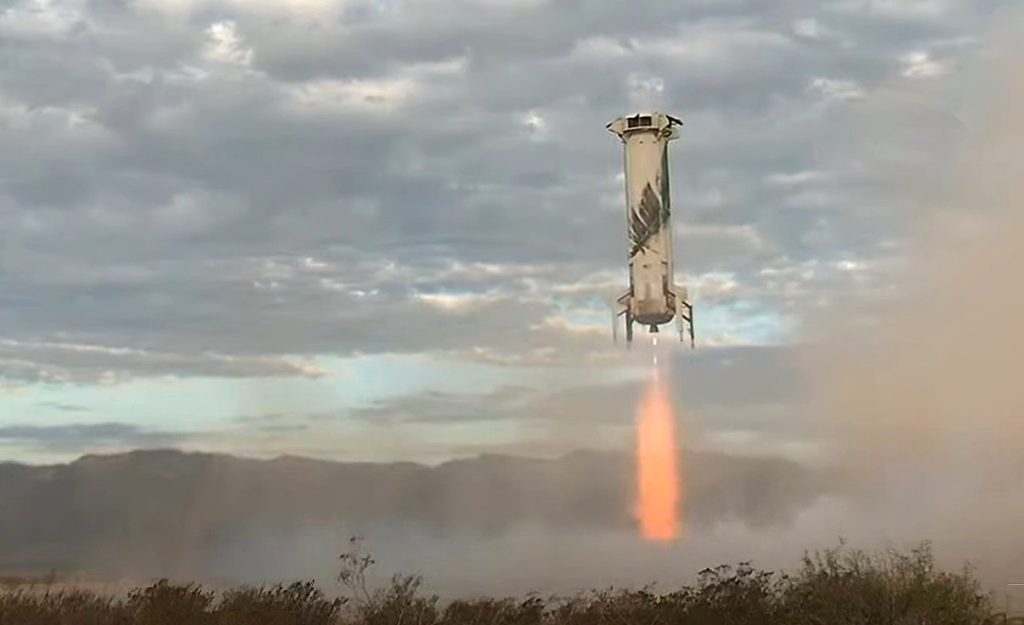Blue Origin’s New Shepard booster successfully landed after a suborbital space launch, carrying a crew of six individuals, including the first researcher to conduct his own experiment on a suborbital space trip with NASA support. The team for Blue Origin’s eighth crewed New Shepard mission included Rob Ferl, a professor from the University of Florida, who studies how living organisms respond to extreme conditions, such as zero gravity experienced in spaceflight. Ferl’s experiment was focused on documenting how plants respond to the transitions to and from microgravity.
The NS-26 mission proceeded smoothly, with the crew capsule passing the 100-kilometer Karman Line that marks the boundary of space. The reusable booster flew back to a landing pad near the launch tower while the crew members experienced the views of Earth from space. The mission lasted 10 minutes from liftoff to landing, with the crew enjoying the experience and the smooth flight. During the flight, Ferl conducted experiments to study the effect of gravity transitions on the gene expression of plants, with the aim to support future missions to the moon and Mars.
Ferl’s experiment was funded by NASA’s Flight Opportunities program, marking the first time a researcher accompanied a NASA-supported experiment on a suborbital spaceflight. After the successful flight, Ferl expressed his awe at the experience of being in space and the view of Earth from above. He emphasized the importance of space exploration for scientists of all kinds to conduct research in this unique environment. The crew also included individuals like Nicolino Elrick, Eugene Grin, Eiman Jahangir, Karsen Kitchen, and Ephraim Rabin, each with their own background and achievements in various fields.
The crew members experienced a smooth ride and the darkness of space during the flight, experiencing the impressive views from space. The successful flight adds to Blue Origin’s list of spacefliers, which includes notable individuals such as William Shatner, Wally Funk, Ed Dwight, and Jeff Bezos. Blue Origin and other commercial ventures have flown numerous payloads for NASA through programs like Flight Opportunities, paving the way for future research missions to space and beyond. The mission showcased the potential for researchers of all backgrounds to conduct experiments in space and contribute to scientific advancement.
The crew members floated in space and took in views of the Earth beneath the black sky, offering a unique perspective from 342,314 feet above the ground. The parachute-assisted descent and touchdown concluded the mission amid the Texas rangeland, with the crew expressing delight and excitement throughout the experience. The successful completion of the NS-26 mission solidifies Blue Origin’s position as a leading space venture, focusing on suborbital space flights and supporting scientific research in space. The mission’s success demonstrates the potential for future collaborations between commercial space ventures, NASA, and researchers to conduct innovative experiments in space exploration.


